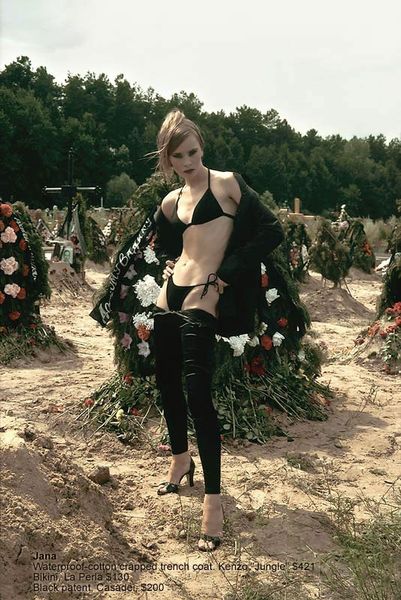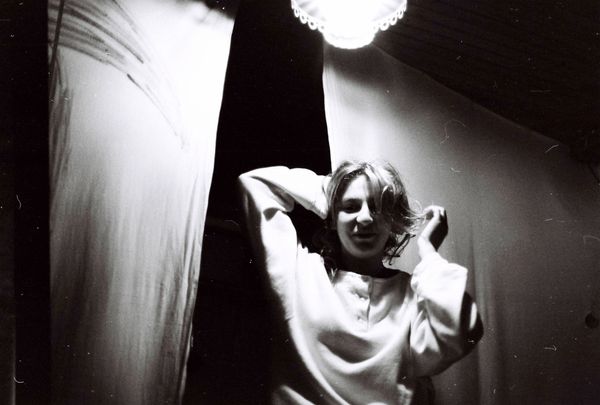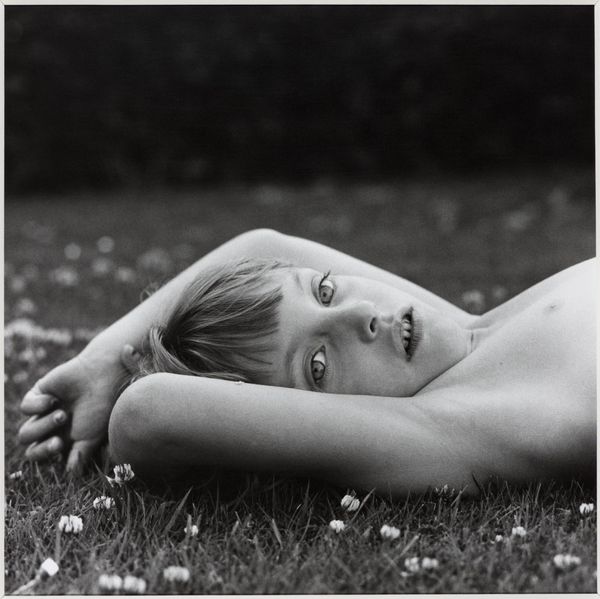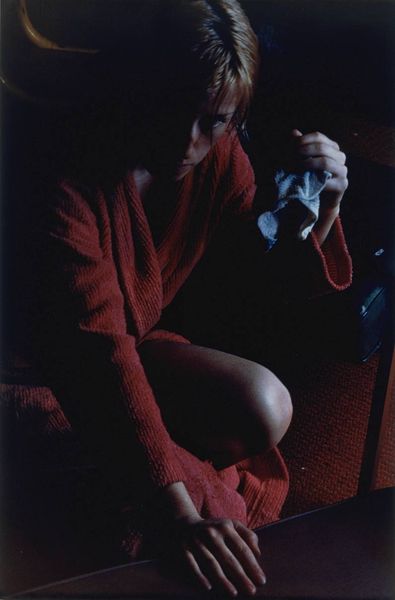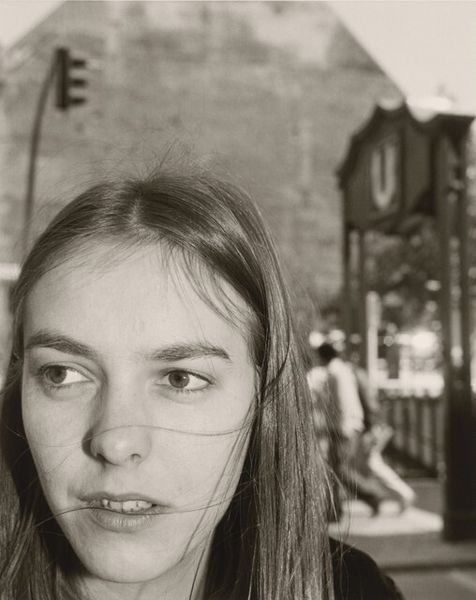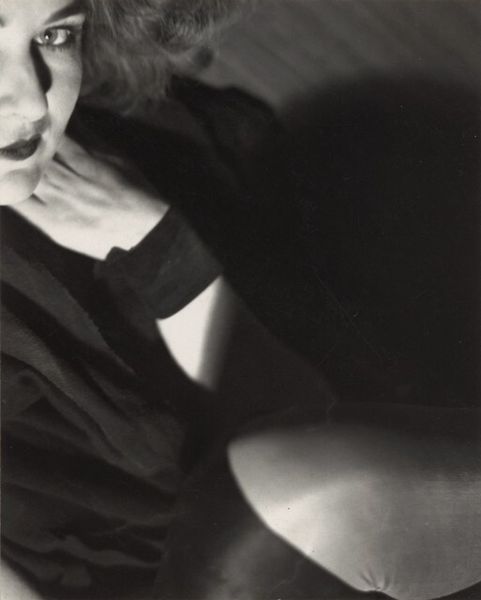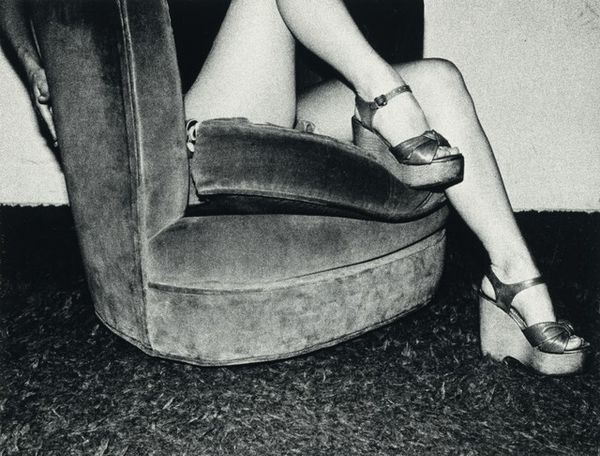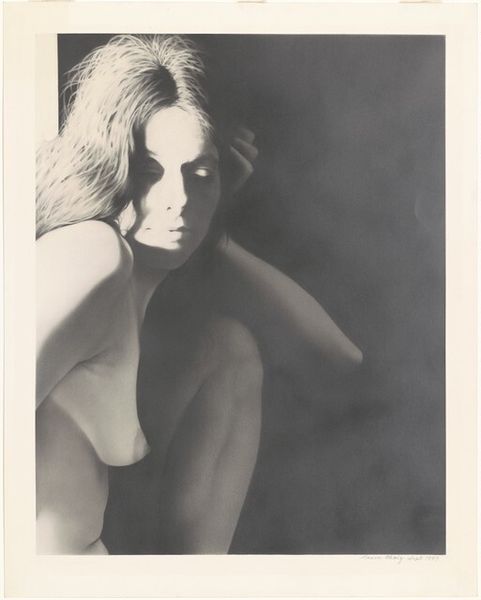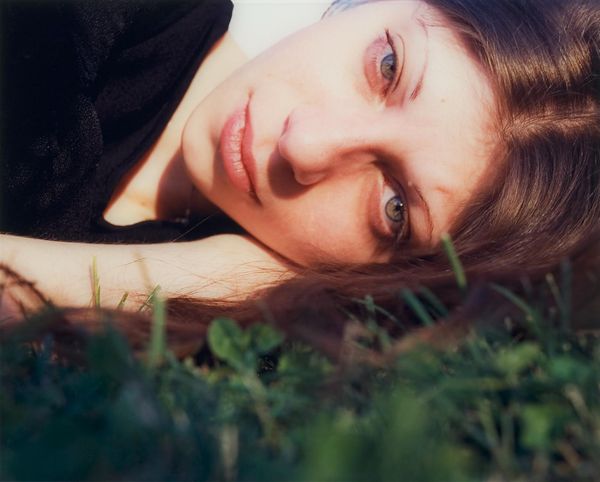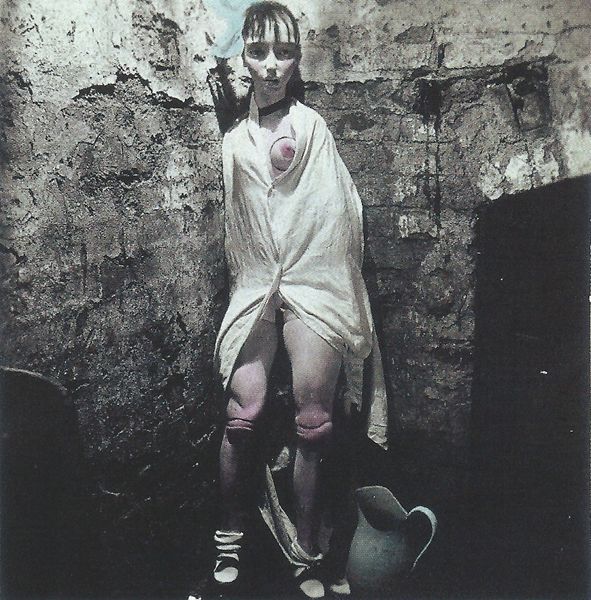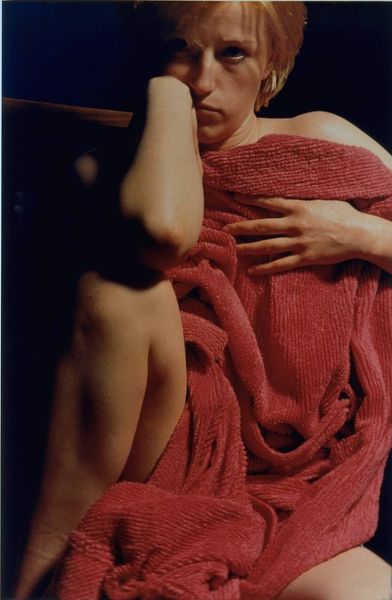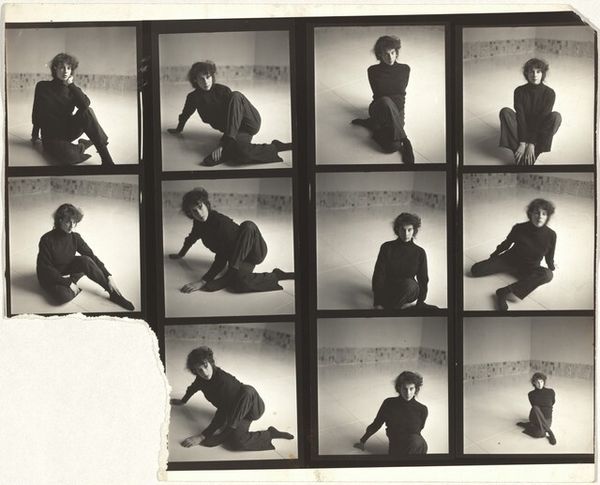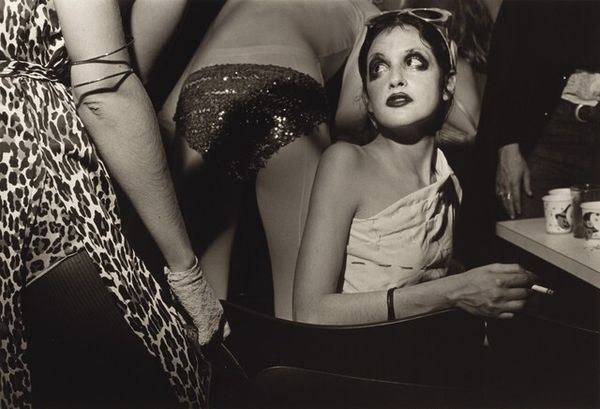
Copyright: Arsen Savadov,Fair Use
Curator: This is Arsen Savadov's photograph "Fashion at the Graveyard" from 1997. What strikes you first? Editor: The jarring contrast. She's perched on what looks like a tomb, dressed in fashionable clothing, surrounded by a landscape of death. It's...unsettling. Curator: Precisely. Let's consider the social context. Ukraine in the 90s was navigating massive economic and social upheaval following the collapse of the Soviet Union. There's an inescapable commentary on the performativity of grief, of perhaps profiting from it through an extravagant display of fashion. Editor: I agree. There’s a dark humor to it, or at least, a bleak irony. Post-Soviet identity was in flux, and this image could be interpreted as an attempt to grapple with these profound societal changes through a lens of consumption. Notice how the textures, of stone and skin, all equally subject to decay are placed together. Curator: The technical aspects also deserve our attention. It's photography, yes, but presented in a staged and highly constructed way. It disrupts the common boundary between documentary and artifice. Editor: How does the location affect your interpretation of its production? Curator: I believe the choice of setting heightens the work’s tension between tradition, as marked by the cemetery, and rapidly changing contemporary values and tastes. The materials speak of the social order: on the one hand, gravestones meant to memorialize ancestors; on the other, cheap fast fashion that goes against traditional, rural folk costumes or against work wear meant to last a lifetime. The location, a graveyard in Ukraine during the rise of capital, marks the death of the older society but also, it raises the question of how much has the social order actually shifted to something radically different? Editor: Ultimately, "Fashion at the Graveyard" is a haunting meditation on identity, grief, and the commodification of everything under shifting socio-economic conditions. It pulls at questions about who owns these burial grounds and, by proxy, Ukraine’s past. It makes me uncomfortable. Curator: Yes, precisely that discomfort is where the picture's power lies. It stays with you. Editor: I suppose facing such unanswerable questions, the image offers its own perspective to continue reflecting on.
Comments
No comments
Be the first to comment and join the conversation on the ultimate creative platform.
